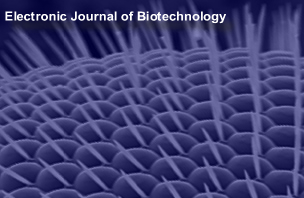Abstract
Cannabis sativa L. is a multiple-use plant that provides raw material for the production of seed oil, natural fiber for textiles, automotive and pulp industries. It has also been used in insulating boards, ropes, varnishes, animal feed, and as medicinal agents. Cannabis has potential to be used for phytoremediation: however, its cultivation is strictly controlled due to its psychoactive nature and usage in producing drugs such as marijuana, and hashish. In this study, psychoactive type Cannabis samples, which were seized from 23 different locations of Turkey, and nine hemp type Cannabis accessions, as well as an unknown accession were used. Our interest was to identify the genetic relatedness of the seized samples and to separate drug and hemp type plants. Inter Simple Sequence Repeats (ISSRs) were employed for analysis based on single plant material (SET1) and bulked samples of them (SET2). Data was analysed via cluster analysis and principal coordinate analysis (PCoA). PCoA analyses, by using SET1 and SET2, were able to efficiently discriminate the seized samples from the fiber type accessions. However, separation of the plants was not clear via unweighted pair-group method using arithmetic average (UPGMA) dendogram in SET1, while they were clearly separated in SET2. Hemp type accessions showed high levels of variation compared to drug type Cannabis both in SET1 and SET2.
Upon acceptance of an article by the journal, authors will be asked to transfer the copyright to Electronic Journal of Biotechnology, which is committed to maintain the electronic access to the journal and to administer a policy of fair control and ensure the widest possible dissemination of the information. The author can use the article for academic purposes, stating clearly the following: "Published in Electronic Journal of Biotechnology at DOI:10.2225/volXX-issueX-fulltext-XX".
The Copyright Transfer Agreement must be submitted as a signed scanned copy to biotec@ucv.cl. All authors must send a copy of this document.
